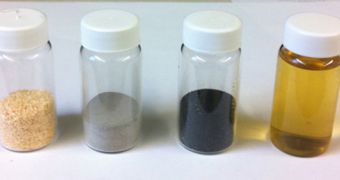Pennsylvania State University (Penn State) environmental engineer Bruce Logan is currently working on a way of transforming wastewater from households into usable, electrical energy. If his team is successful, then we may gain access to a new method of producing current in a renewable manner.
This study was informed by the fact that our society tends to waste a lot of water. Statistically speaking, the majority of the water we use goes to waste without being put to proper use. It then goes on to enter purifying stations for treatment.
This is a very costly and energy-intensive processes that removes all impurities from the water before it is returned to the environment. Rather than following this chain, the Penn State team proposes harvesting wastewater and harnessing it for energy production.
According to Logan, we currently use as much as 5 percent of the entire amount of energy we produce in order to run the infrastructure associated with carrying, distributing and treating water. That amount could be reduced significantly with the new approach.
“We can literally pour wastewater into this fuel cell and take the energy in the wastewater and make electricity. We're using bacteria to actually turn any organic matter and some inorganic matter directly into electricity,” he says.
“The bacteria do it themselves. That's how we're running this fan,” he jokes, while showing reporters a small fan attached to a fuel cell in his lab. The expert explains that microorganisms are key in this approach, since they are the ones producing the electricity.
Bacteria are already put to use in wastewater treatment plants, where they are responsible for consuming all organic material from the water being treated. Logan and his team are working on a way to use that for electricity production, using funding from the US National Science Foundation (NSF).
The basic operating principle behind the novel fuel cell technique is quite simple, the team says. As bacteria consume organic waste, they generate electrons are byproducts. These particles then accumulate on carbon bristles that permeate the fuel cell.
Once enough of them are accumulate, they are released through a circuit attached to the fuel cell, providing electricity to whatever equipment is attached to the wires. “We can make all sorts of different kinds of energy,” Logan says.
“Typically, a microbial fuel cell produces electrical power or current, but if we add a little bit of voltage into the system, we can evolve hydrogen gas, which is really nice, because that's a very environmentally friendly energy carrier,” he adds.
“You can run cars on it; you can use it in many, many industries. And, we can link these reactors together in order to multiply the power that's produced by each of these and to capture the power,” Logan concludes.

 14 DAY TRIAL //
14 DAY TRIAL //